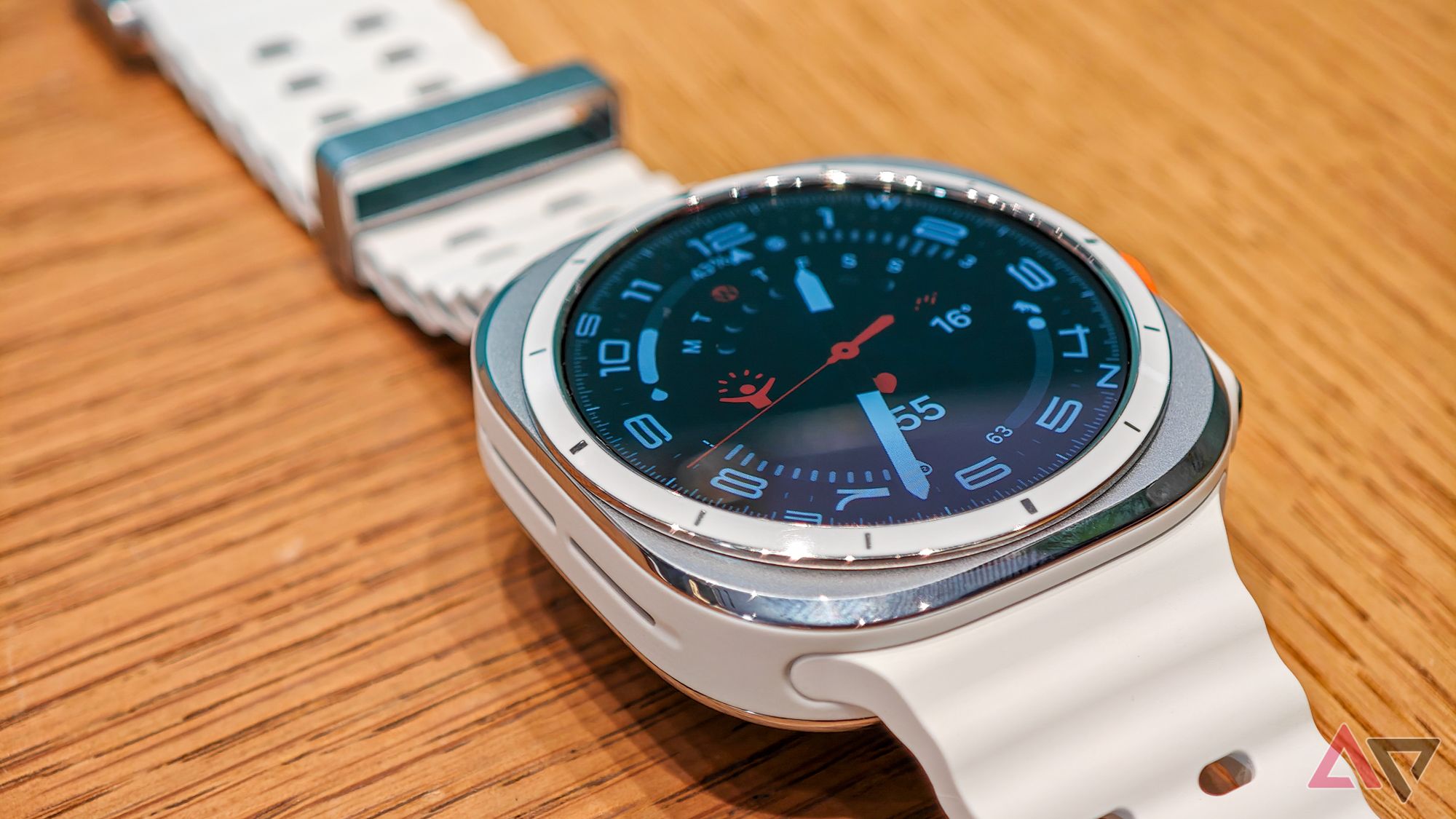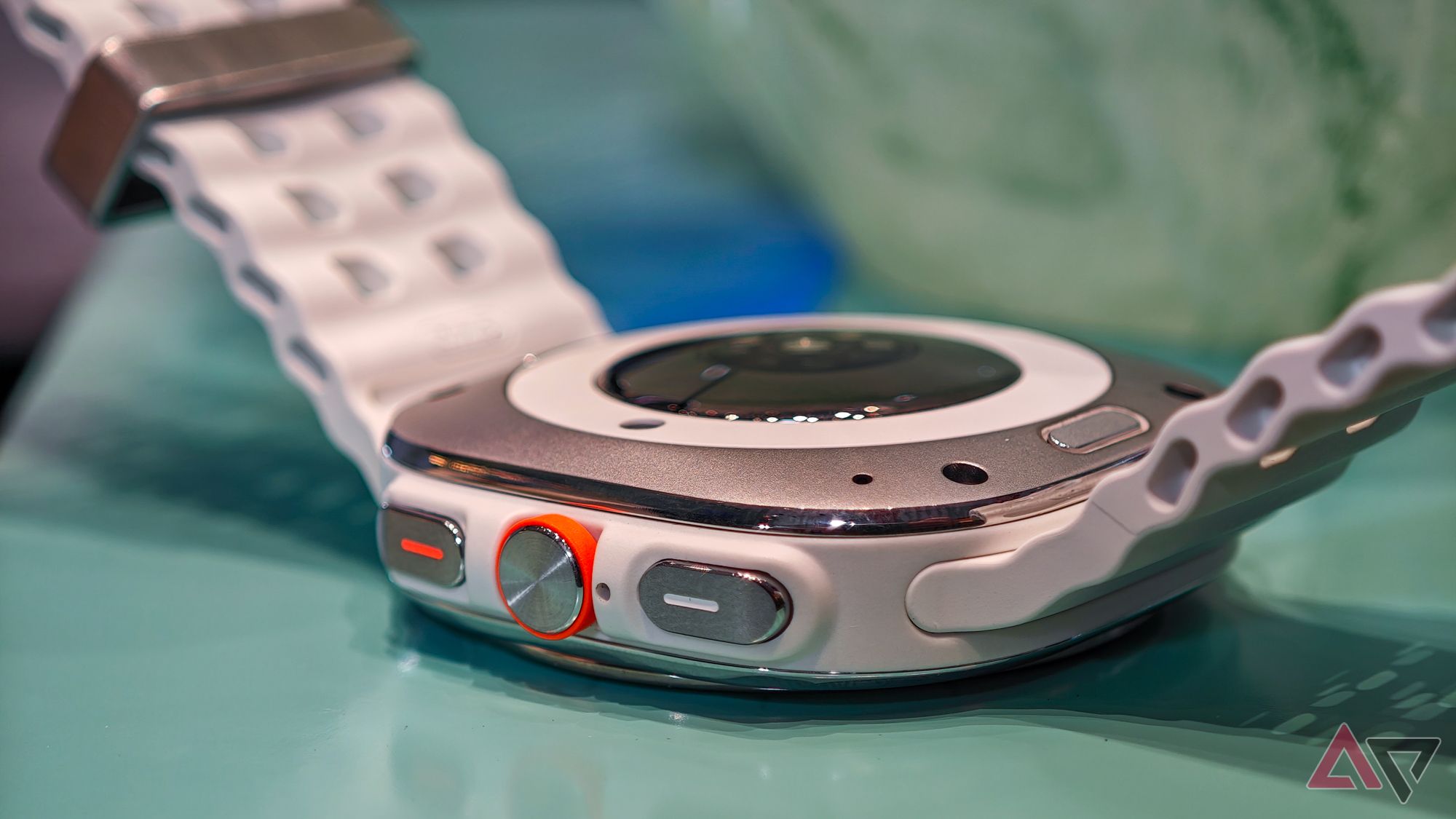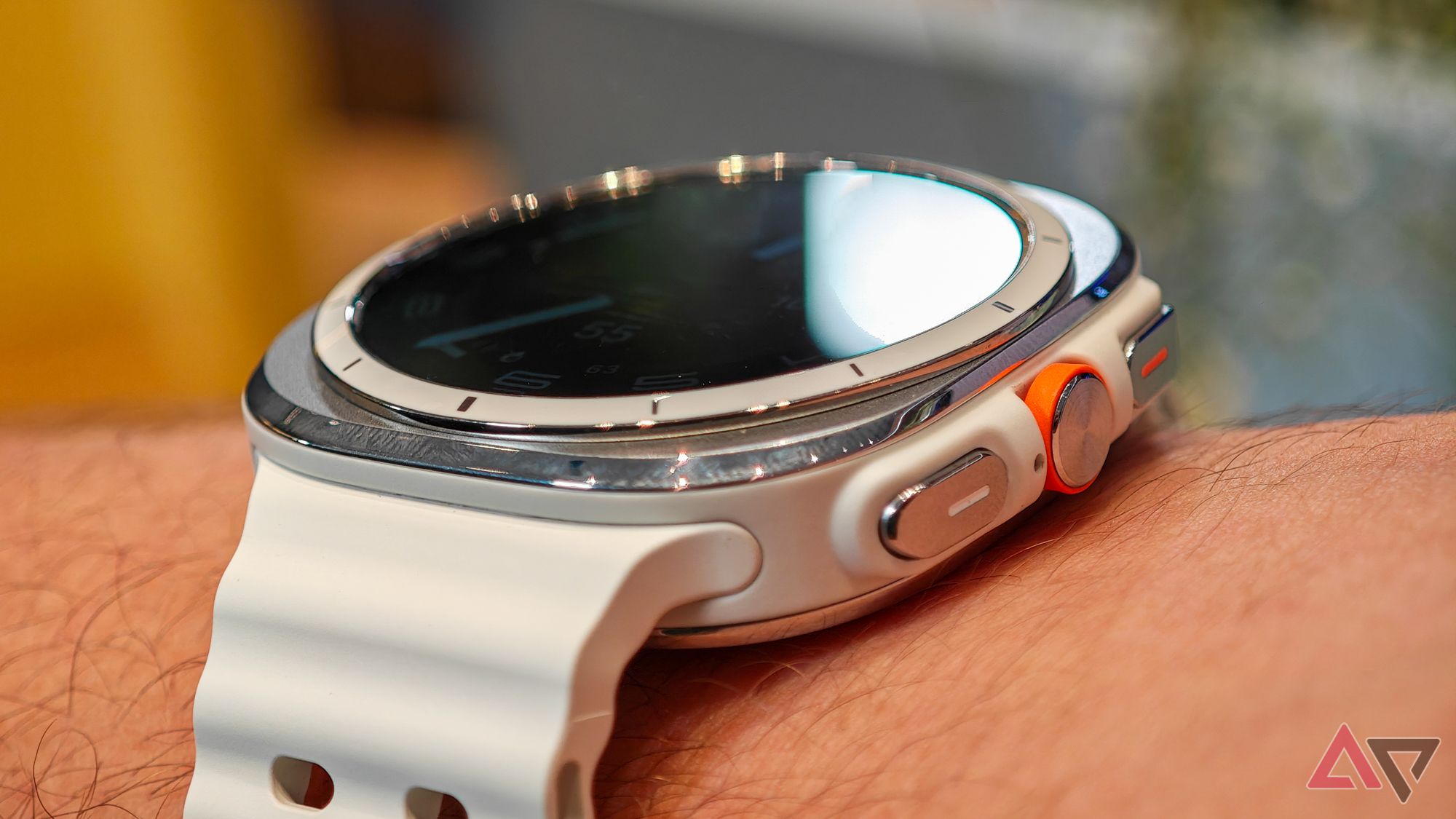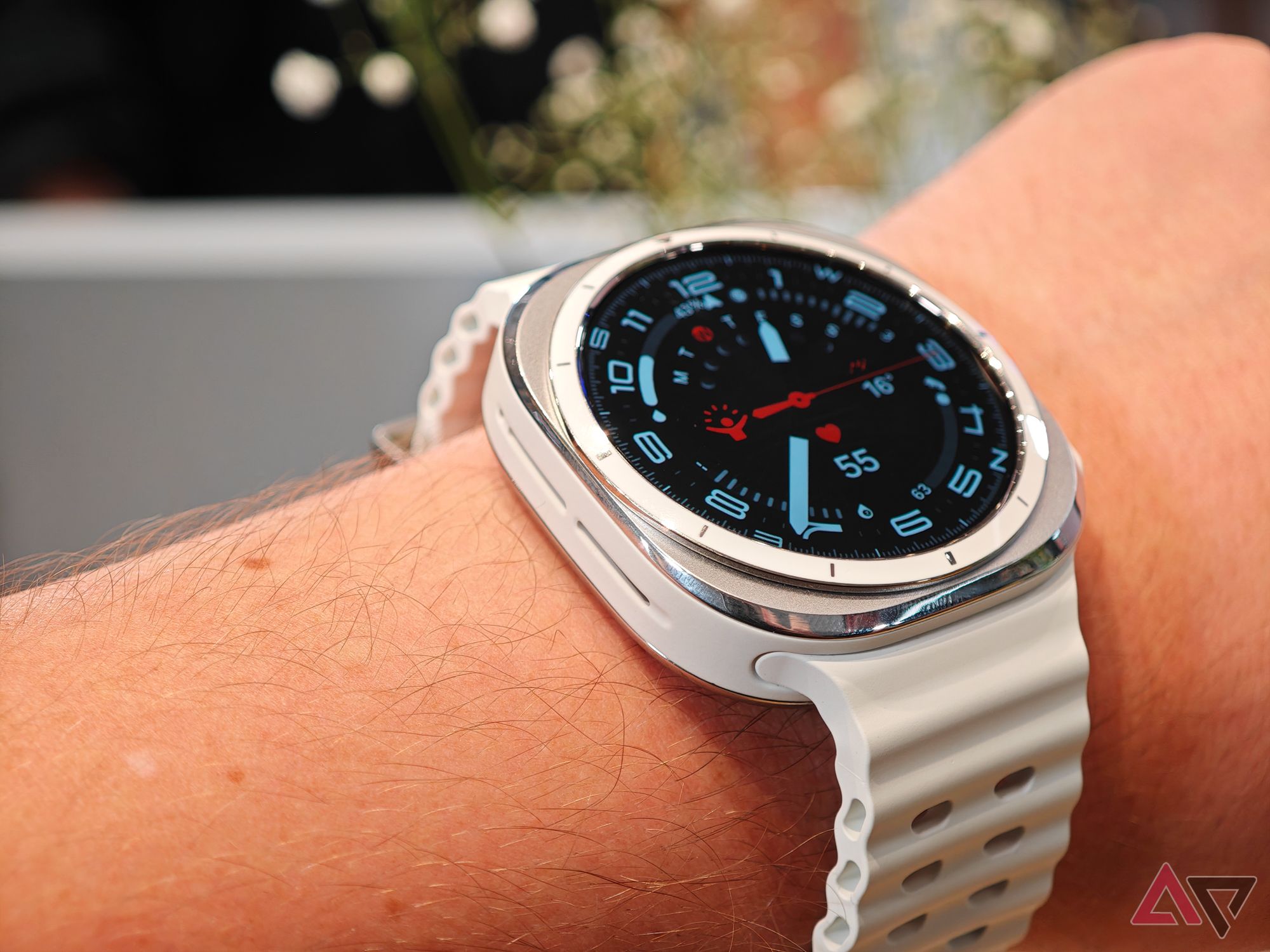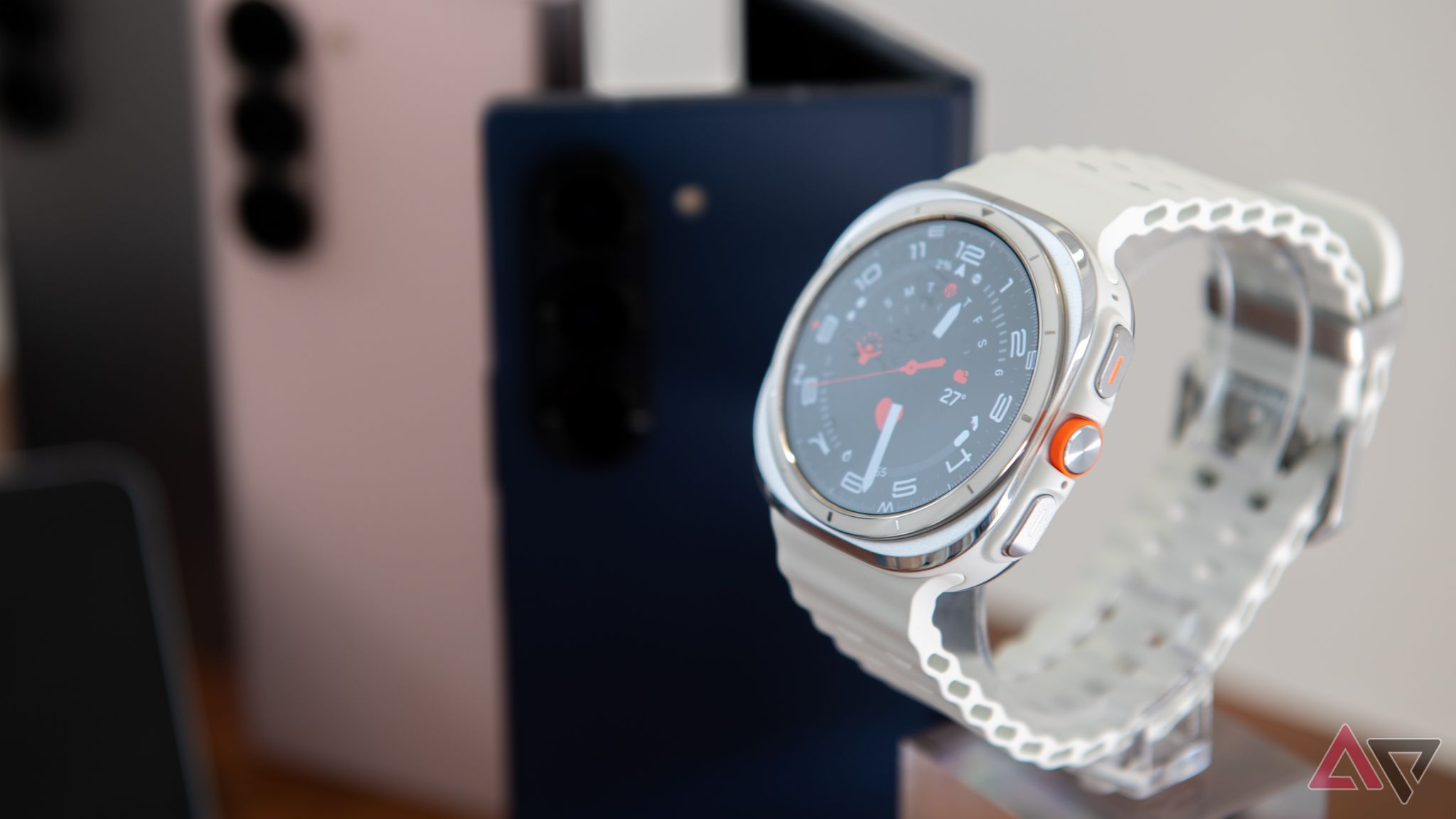Quick answer:
Yes. The Samsung Galaxy Watch Ultra has one of the highest water resistance ratings you’ll find on any modern smartwatch. It can be submerged in up to 1.5 meters of freshwater for up to 30 minutes and survive under 100 meters of seawater, making it suitable for diving.
Following a weaker attempt to appeal to extreme sports enthusiasts with the 2022 Galaxy Watch 5 Pro, Samsung has pulled out all the stops this year to create the Galaxy Watch Ultra, a wearable designed to handle nearly everything life can throw at it.
While the name and design compare to Apple’s Ultra smartwatch, which’s been on the market for a couple of years, Samsung used it as inspiration to up its game. The Galaxy Watch Ultra enters the realm of rugged smartwatches with a big splash. Android owners will no longer have to compromise between a durable sports watch and the best Wear OS features, as the Galaxy Watch Ultra provides both.
Is the Samsung Galaxy Watch Ultra waterproof?
Manufacturers dislike using the term “waterproof,” but the Galaxy Watch Ultra is as good as it gets. It has Samsung’s standard IP68 rating, matching its premium smartphones and other smartwatches, but it takes that up another notch with a 10 ATM (atmospheres) rating that makes it suitable for swimming. If that doesn’t mean “waterproof,” then it’s hard to imagine what does.
That’s joined by a MIL-STD-810H certification, which means the wearable can also handle extreme conditions like temperature shocks and impacts.
What does an IP68 rating mean?
The IP68 rating is commonly found on midrange to premium smartphones. It represents nearly the highest dust and water resistance levels among IP ratings, protecting against everything from rain to immersion.
The first number in an IP rating indicates how resistant the device is to dust and other small particles. This goes up to six, which makes the Galaxy Watch Ultra dust-tight. Samsung typically tests this by creating lower air pressure inside a device and then blowing 2kg of 0.05mm talc powder into a test chamber containing the device for two hours, confirming nothing gets inside.
The second number is the water resistance rating, which goes up to nine. However, that higher number is seldom seen in consumer electronics since it’s intended for protection against water jets of extreme pressure and temperature, such as you’d get from a power washer. The Galaxy Watch Ultra might still be able to handle those, especially considering its 10 ATM rating (which we’ll discuss in the next section), but it hasn’t officially been tested for it.
The IP68 rating indicates that the device can survive immersion for at least 30 minutes in at least one meter of freshwater. However, that’s just the baseline, and manufacturers typically go higher. In Samsung’s case, that’s 1.5 meters for the same 30-minute period. Other manufacturers may have different standards for their IP68 ratings.
What does a 10ATM rating mean?
Samsung’s IP68 rating may seem unusual, considering that the Galaxy Watch Ultra is also rated for 10 atmospheres (10ATM), which is over 60 times deeper. That works out to submersion in up to 100 meters of water, with Samsung testing it in 5% salty water and 4ppm chlorine water.
The primary difference between the IP68 and 10ATM ratings is that the latter doesn’t specify a length of time. The Galaxy Watch Ultra has been tested to survive in up to 1.5 meters of water for up to 30 minutes, but there’s no word on how long it will last if you go deeper than that.
Can I take the Galaxy Watch Ultra diving?
Sadly, this is one area where the Galaxy Watch Ultra doesn’t quite live up to its “Ultra” moniker. Unlike the Apple Watch Ultra, which is dive-rated for depths of up to 40 meters, Samsung says the Galaxy Watch Ultra is “not suitable for high-pressure water activities and diving.”
Instead, the company indicates it should only be used for “shallow-water activities like swimming in a pool or ocean.” That might leave you questioning the point of a 10ATM rating if you can’t go diving to 100 meters, but the answer is a combination of how ATM ratings work and an abundance of caution on Samsung’s part.
Not all types of water are equal
Two important caveats apply to these water resistance ratings. The first is that IP68 ratings are based exclusively on fresh water. This means that your Galaxy Watch Ultra isn’t guaranteed to survive extended periods of immersion in a salty ocean or a chlorinated pool. It might still come out unscathed, but Samsung isn’t making any promises.
Fortunately, the 10ATM rating covers saltwater and chlorine up to 100 meters. However, the catch is that it’s 100 meters of still water. This is measured in lab conditions based on the static pressure the Galaxy Watch Ultra would be exposed to if it were sitting in a deep pool of water at a standard room temperature.
If you’re swimming with your smartwatch, it’s not sitting still. It’s subjected to the flow of water around it and additional pressure with each stroke, creating fluctuations that could exceed the atmospheric depth of the water.
This is why a 10ATM rating is considered suitable only for shallow water activities, such as swimming, and snorkeling, and high-speed water sports like surfing, sailing, and water-skiing. The Galaxy Ultra Watch should handle all those without any problems, and diving into water should also be fine.
Technically, a 10ATM watch in perfect condition should be able to handle recreational scuba diving, which usually only goes to a depth of about 40 meters. That’s Apple’s rating for its extreme smartwatch, but Samsung is being more circumspect. And remember that the 10ATM rating doesn’t specify how long it can last at those depths.
Keep your Galaxy Watch Ultra waterproof
As Samsung notes, “water resistance is not a permanent condition and can diminish over time.” That means a brand new Galaxy Watch Ultra may survive immersion in 100 meters of water for a short time, but that might be the case after you’ve been wearing it for a few months. The good news is that there are things you can do to help preserve the smartwatch’s water resistance.
Firstly, all bets are off if your device is physically damaged. Even a small chip or crack can easily let water inside, and this risk gets higher with increased water pressure. Samsung also recommends not exposing your devices to too much salt water or ionized water. The 10ATM rating is tested against 5% salt water, but that can still diminish the water-resistant seals over time, so it’s good to rinse your watch off with fresh water after an ocean or pool swim.
Soap and detergent are also things to watch out for. Don’t wash your Galaxy Watch Ultra with anything other than warm, fresh tap water. Don’t use hot water, dish soap, household cleaners, or other chemicals, as these can affect the seals. Likewise, it’s best to avoid showering with your Galaxy Watch Ultra for the same reason, unless you’re just rinsing off after a swim.
Lastly, despite the Galaxy Watch Ultra’s high water-resistance ratings, water damage isn’t usually covered under warranty. So, it’s a good idea to get a Samsung Care Plus plan for some extra peace of mind, especially if you plan on regularly using your wearable in extreme water conditions.
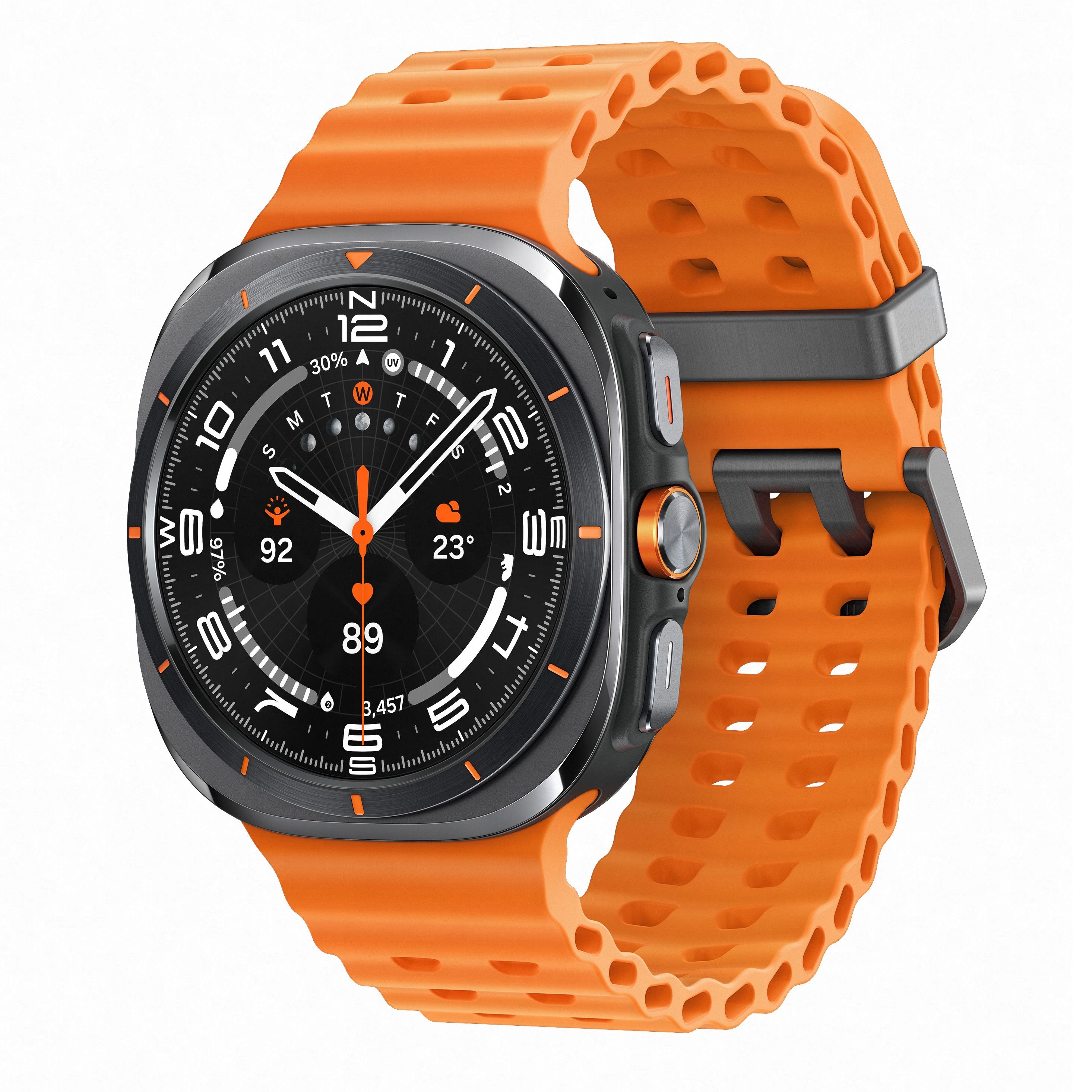
Samsung Galaxy Watch Ultra
The Samsung Galaxy Watch Ulra is a great watch for active individuals, with its durable construction. This includes waterproofing with an IP68 rating and a rating for 10 ATMs of pressure.
Source link

